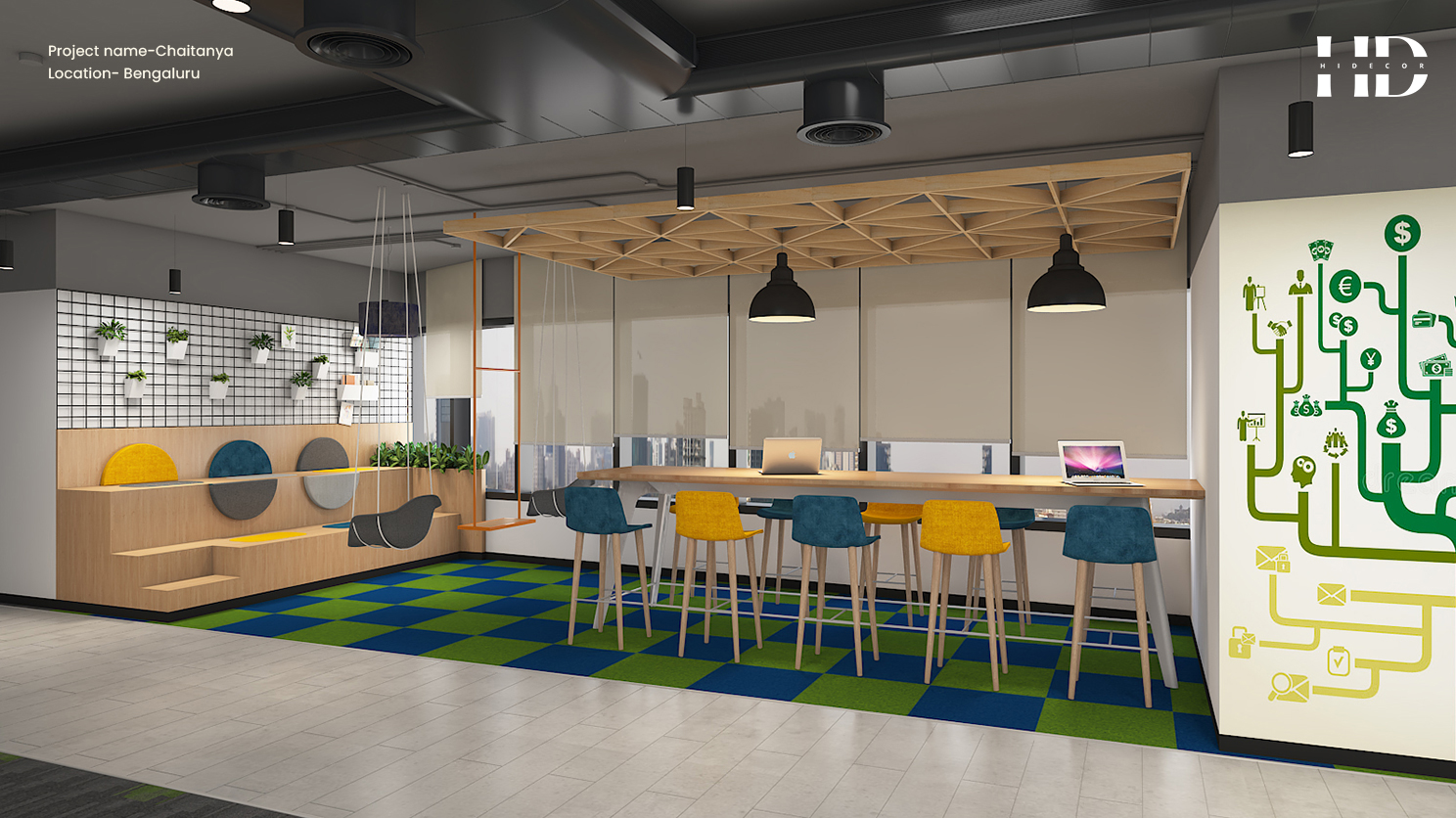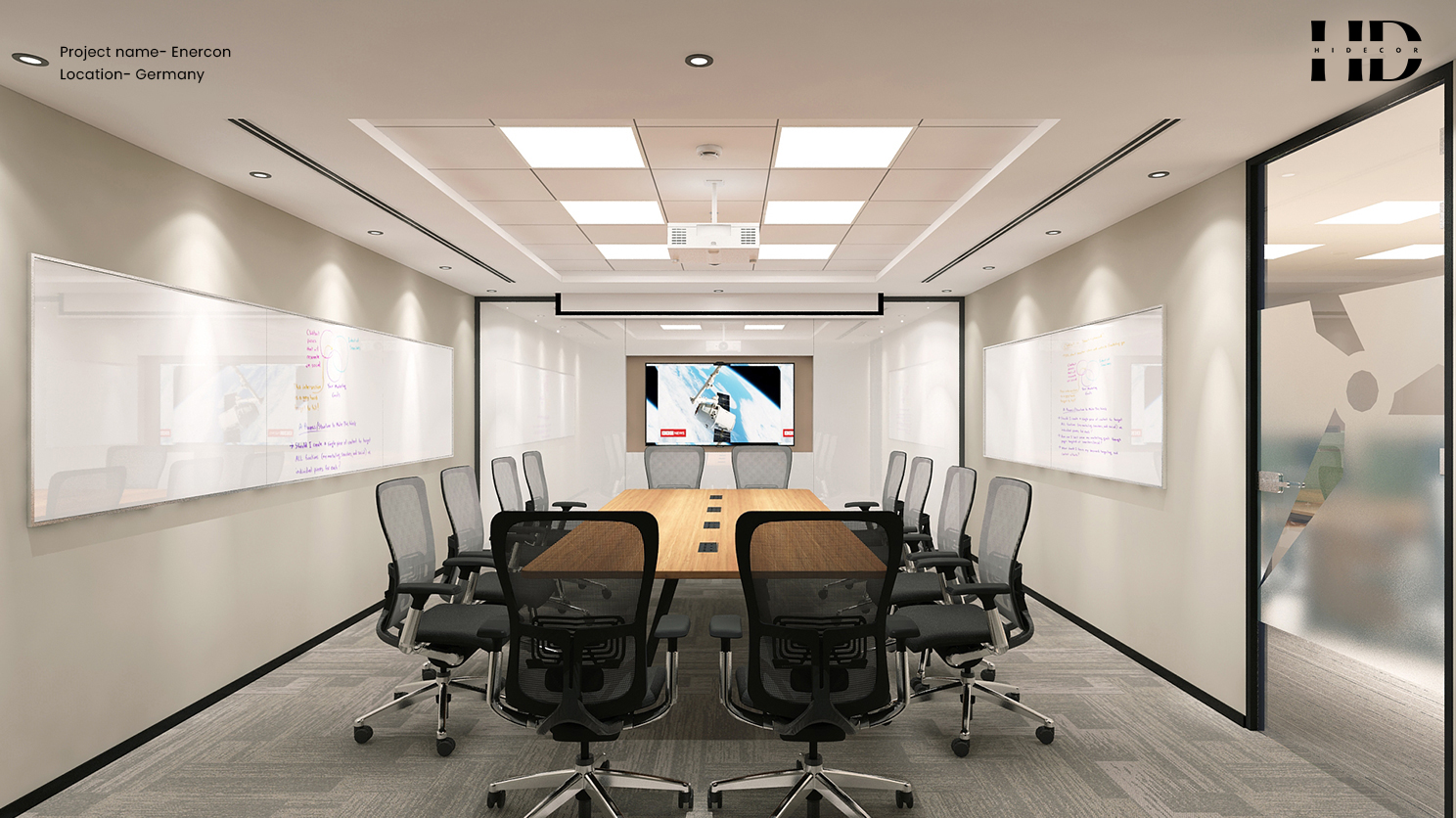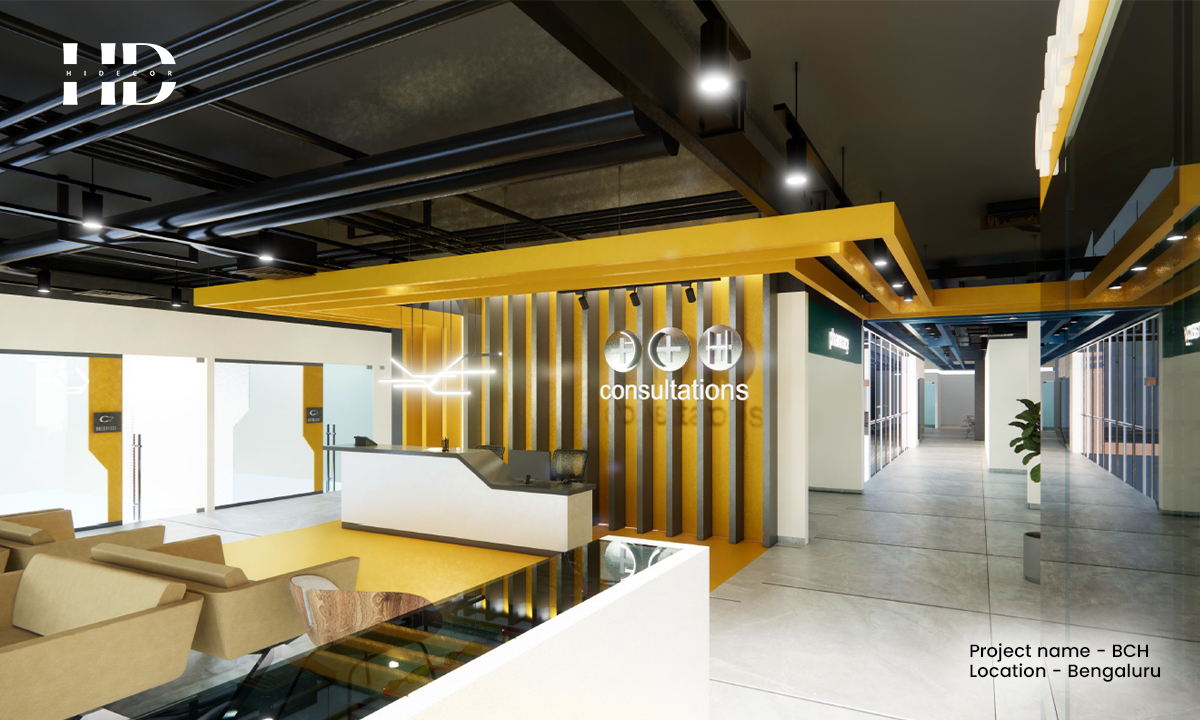As a technology leader and design-build expert based in India, I’ve witnessed the transformative impact of AI on various industries. Among these, workplace interior design and build stands out as a sector poised for revolutionary change. AI in workplace design is not just a trend; it’s a paradigm shift that redefines how we conceptualize and execute office spaces.
The Role of AI in Workplace Design
AI technologies in workplace planning are changing our approach to the design and build process. With AI-driven interior design, we can analyze vast amounts of data to create smart office solutions that optimize space, enhance functionality, and improve employee well-being. AI can simulate different design scenarios, predict outcomes, and offer insights that were previously unimaginable.
Intelligent Office Spaces
Intelligent office spaces are the future of workplace interiors. These spaces are designed with automation in interior design, incorporating smart building technologies that adapt to the needs of the workforce. For instance, AI can manage lighting, temperature, and even acoustics in real-time, creating an environment that fosters productivity and comfort.
Future-Proof Office Design
Incorporating AI in workplace design trends means creating future-proof office designs that are flexible and adaptable. The rapid pace of technological advancements requires workplaces to be agile. AI-driven solutions enable us to anticipate future needs and design spaces that can evolve with changing business dynamics.
Enhancing Employee Productivity
AI-enhanced work environments are designed to boost employee productivity. By analyzing work patterns and preferences, AI can suggest optimal layouts and configurations. This ensures that the workspace is not only aesthetically pleasing but also conducive to efficient work. For example, AI can identify areas where collaboration is frequent and suggest open-plan layouts, while quieter zones can be designed for focused tasks.
Sustainability in Workplace Design
Sustainable workplace design is another area where AI plays a crucial role. AI can optimize resource use, reduce waste, and ensure energy efficiency. Smart building technologies can monitor and adjust energy consumption, contributing to a greener and more sustainable workplace.
The Office of the Future
The office of the future is a seamless blend of technology and design, where AI-driven interior design meets smart office solutions. This integration results in workspaces that are not only functional but also inspiring. As architects and design-build experts, our role is to harness the power of AI to create environments that support the well-being and productivity of employees while meeting the evolving needs of businesses.

Addressing the Challenges of AI in Workplace Design
While AI brings numerous benefits to the future of workspace design, there are several potential drawbacks and challenges associated with its extensive use. Mitigating these requires a balanced approach that combines technology with human insight, ethical considerations, and robust security measures.
Loss of Human Touch: AI-driven designs might lack the personal touch and creativity that human designers bring. Over-reliance on algorithms can result in spaces that feel impersonal or overly uniform. To counter this, human designers should work alongside AI to incorporate creativity and personal touches. AI should be used to enhance, not replace, human creativity and intuition.
Privacy Concerns: AI systems often rely on data collection and analysis to optimize workspace design and functionality. This can raise significant privacy concerns among employees, who may feel uncomfortable with constant monitoring. Implement strict data privacy policies and transparent data collection practices. Inform employees about what data is being collected, how it will be used, and ensure compliance with data protection regulations.
High Initial Costs: Implementing AI technology in workplace design requires a substantial initial investment. The cost of AI software, hardware, and skilled personnel can be prohibitive for smaller firms. Start with pilot projects to demonstrate the value of AI before committing to large-scale investments. Explore cost-effective AI solutions and seek out government grants or subsidies for technological innovation.
Dependence on Data Quality: The effectiveness of AI in design depends heavily on the quality of the data it processes. Inaccurate or biased data can lead to poor design decisions that do not meet the needs of the workforce. Use robust data validation and cleaning processes to ensure high-quality data inputs. Regularly audit and update data to reflect the current and diverse needs of the workforce.
Job Displacement: Automation and AI could potentially displace jobs in the design and construction sectors. Professionals who are unable to adapt to new technologies might find themselves out of work. Provide training and reskilling programs for employees to adapt to new roles that AI creates. Emphasize human skills that AI cannot replicate, such as creativity, empathy, and complex problem-solving.
Complexity and Maintenance: AI systems can be complex and require ongoing maintenance and updates. This can add to the operational costs and complexity of managing workplace environments. Choose user-friendly AI systems with good vendor support. Establish a dedicated team to manage AI maintenance and updates, ensuring minimal disruption to operations.
Ethical Concerns: The use of AI raises ethical questions, such as the potential for biased algorithms and decisions that may not consider the diverse needs of all employees. Develop ethical guidelines for AI use in workplace design. Regularly review AI decisions for biases and ensure that diverse employee needs are considered.
Risk of Over-Standardization: AI might favor standard solutions that work for the majority but overlook unique or creative design possibilities. This can result in workplaces that lack innovation and character. Use AI to generate multiple design options and allow human designers to select and customize the best fit. Encourage innovative and personalized design solutions.
Reliability Issues: AI systems are not infallible. Technical glitches, software bugs, or system failures can disrupt the workplace environment and hinder productivity. Implement redundant systems and regular testing to minimize the risk of AI failures. Have contingency plans in place to handle potential technical issues swiftly.
Resistance to Change: Employees and management may resist adopting AI-driven changes, especially if they are not convinced of its benefits or feel that it disrupts their work habits and comfort zones. Engage employees in the design process and seek their input on AI-driven changes. Provide clear communication about the benefits and address concerns through education and demonstration.
Security Vulnerabilities: AI systems connected to the workplace infrastructure can be vulnerable to cyber-attacks, potentially compromising sensitive information and disrupting operations. Invest in robust cybersecurity measures to protect AI systems and data. Regularly update security protocols and conduct vulnerability assessments to safeguard against cyber threats.
Smart Office Solutions in India
Indian businesses are increasingly adopting smart office solutions to enhance productivity, optimize space usage, and create a more dynamic work environment. At HIDECOR, we see three smart office solutions being extensively adopted across enterprises regionally:
IoT-Enabled Smart Devices:
- Smart Lighting and HVAC Systems: IoT-enabled smart lighting and HVAC systems are becoming common in Indian offices. These systems automatically adjust lighting and temperature based on occupancy and natural light levels, leading to significant energy savings and improved comfort.
- Smart Desks and Furniture: Smart desks equipped with sensors can track usage patterns and provide data to optimize space utilization. Adjustable desks that can switch between sitting and standing positions are also popular, promoting better ergonomics and health.
HIDECOR has successfully integrated IoT-enabled smart devices in several projects, including:

AI-Powered Space Management Solutions:
- Workspace Optimization Tools: AI-powered tools analyze how office spaces are used and suggest ways to optimize layouts and seating arrangements. These solutions help in creating flexible workspaces that can be easily reconfigured based on the changing needs of the business.
- Smart Booking Systems: Intelligent booking systems for meeting rooms and shared spaces use AI to manage reservations, avoiding conflicts and maximizing the use of available resources. These systems can also integrate with employee calendars and suggest optimal times and spaces for meetings.
HIDECOR has successfully implemented AI-powered workspace optimization tools at Belenus Champion Hospital
Click this link 👉https://hidecor.in/portfolio/belenus-champion/

Advanced Communication and Collaboration Tools:
- Unified Communication Platforms: Tools like Microsoft Teams, Slack, and Zoom are widely adopted to facilitate seamless communication and collaboration among remote and on-site employees. These platforms integrate messaging, video conferencing, and file sharing into a single interface, enhancing productivity and team cohesion.
- Virtual and Augmented Reality (VR/AR): VR and AR technologies are being used for virtual meetings, training sessions, and collaborative design processes. These immersive technologies allow teams to interact and work together in a virtual environment, reducing the need for physical presence and travel.
Conclusion
The future of workplace interior design and build is undeniably intertwined with AI and smart technologies. As we move forward, the focus should be on creating intelligent office spaces that are flexible, sustainable, and designed with the well-being of employees in mind. Embracing AI in workplace design trends will not only enhance the efficiency and functionality of office spaces but also pave the way for innovative and future-proof office designs. As leaders in this field, it is our responsibility to leverage AI-driven solutions to create workplaces that are truly ahead of their time.

